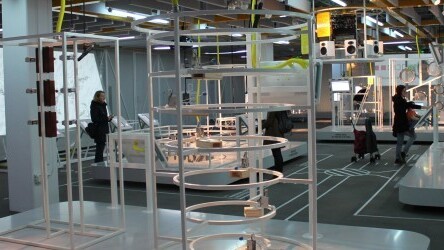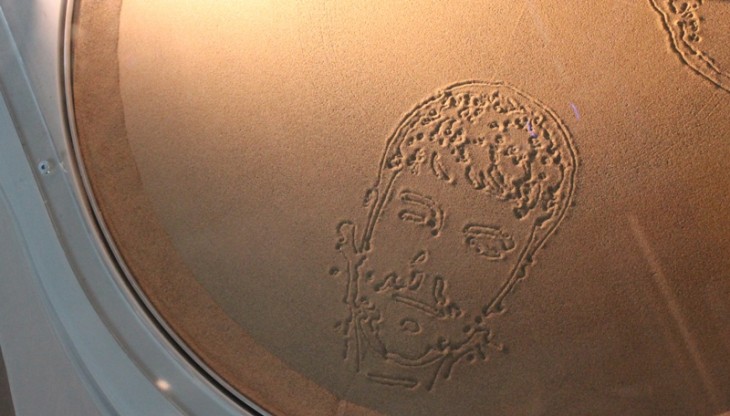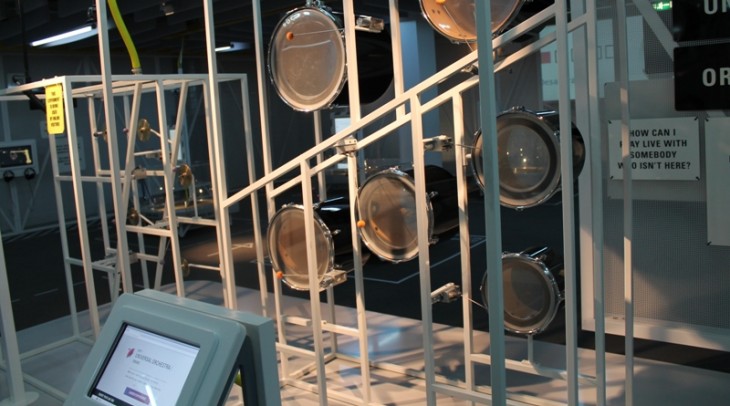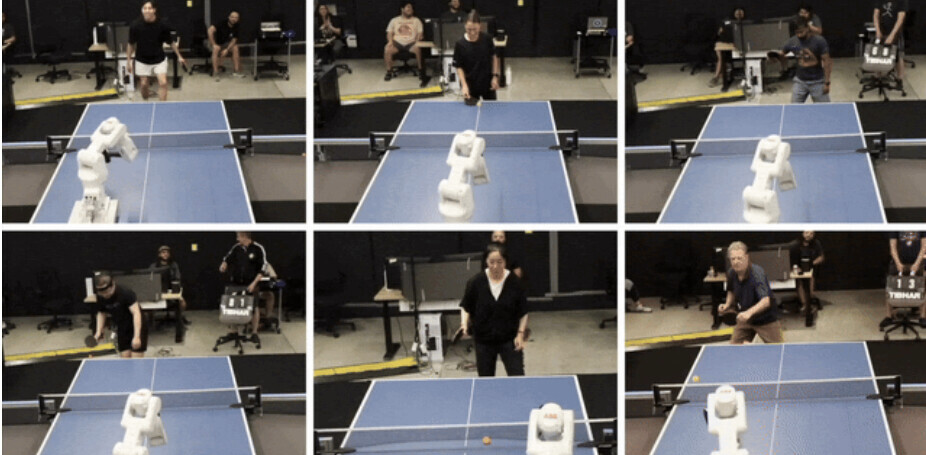
Google has turned to GitHub to take two of its most popular Chrome experiments to the Open Source development community.
If you recall last July, London’s Science Museum entered into a year-long collaboration with Google called Web Lab, a collaborative project featuring a range of interactive Chrome experiments designed to bring the inner workings of the Web to life.
Visitors to the free exhibition, which will close this Sunday, were given five separate experiments to get involved with.
Simultaneously, online participants could also ‘visit’ from around the world to interact with the same installations. Each Web Lab experiment tapped a modern Web technology to explore a specific idea that’s relevant to computer science.
Even if you couldn’t tell a WebSocket from a wall socket, Web Lab demonstrated the power – and potential – of the Internet to in-museum and online visitors. You can read more about the exhibition here.
Now that it’s come to an end, Google is looking to keep parts of the project going, with Orchestra and Sketchbots now available to build upon and host by anyone.
The lowdown
Sketchbots was one of our favorites from the original exhibition, and it’s certainly the most immediately awe-inspiring of the five.
Sketchbots are basically custom-built robots that snap a photo of you, and then sketch them in sand. This image is one taken of me, and it does look reasonably accurate.

Until fairly recently, drawing images in a standard Web browser wasn’t easy to achieve without additional software. But Sketchbot helps illustrate the latest version of HTML, which includes Canvas. It means you can draw whatever you like, including dynamically-rendered 3D graphics as you see in computer games.
Universal Orchestra, on the other hand, is an Internet-powered eight-piece robotic orchestra creating harmonious music. It encourages people from around the world (including visitors to the museum) to play music together, using real instruments live in the museum or virtual versions online.
You can choose from a selection of drums, temple blocks, vibraphones, marimbas and more.

The purpose of this experiment was to illustrate the power of WebSockets to enable real-time collaboration. The browser intervenes by taking the streams of notes played by everyone to transform them into pleasant music. So you don’t have to try and stay in-time with others all on your own.
Web Lab lives on. Sort of.
Back in January, we asked Dave Patten, Head of New Media at London Science Museum, what the future would hold for Web Lab, and he said that while it hadn’t been decided, it definitely wouldn’t continue in London.
“We’re beginning to talk to Google about what they want to do with it at the end of the year-long phase,” he said.
“It won’t stay here, as we have something else lined up to replace it. It may go somewhere else, possibly in a modified form, or it might become something completely different,” continued Patten. “Or, it could be a one-off, and you’ll never get a chance to see this again. I’m not averse to that happening, there’s something quite nice about an exhibition that doesn’t go past its sell-by date, and either you got to see it or you didn’t. There’s some additional value sometimes if you can do that.”
As things stand, the exhibition does indeed look to have been a one-off, but at least elements of it will live on for developers to build on.
In the GitHub notes, Paul Kinlan, a Developer Advocate for Google Chrome who was involved in the Web Lab roll-out, says that Google “fundamentally believe that what we have learnt building and developing this project should be available for everyone to learn from and be inspired to build upon.” He adds that many new technologies were used for the project.
While some of the original code has been removed from what has now been made publicly available – parts that “detract from the core-experience” – the bulk of it is in there.
So this now means that developers can build hardware and the associated controllers – similar to what was on display at London Science Museum – on the original code-base. Anything could come of this really, and it Google’s taken the liberty to add extra elements to the Open Source version of the project, with Orchestra getting WebRTC.
For the uninitiated, WebRTC is an open source project for developers to let Internet users communicate in real-time with voice and video, simply by using a Real-Time Communications (RTC) compatible browser.
Google first started trialing WebRTC for Chrome almost two years ago, and it’s now at a stage to enable pretty flawless real-time communications. Firefox is also currently in the process of implementing the technology.
“WebRTC is starting to become ubiquitous in the browser,” says Kinlan. “With the Open Source project we wanted to demonstrate how easy it is to use and deploy WebRTC in real projects.”
Potential projects
Now that it’s open to the development community, how does Google envisage the Web Lab code being used?
“The two experiments are very visceral and offer many possibilities for tinkering and experimentation,” says Kinlan. “While I was getting the project ready for launch, I discovered a company in London that makes a thermal printer, called Little Printer. I decided to buy one, and within a couple of hours I could send an outline of my face from the SketchBot to the printer. There are lots of ‘Maker’ projects like the PolarGraph or Lego MindStorm that could be hooked up quite easily.”
“The Orchestra is especially interesting to me because it was an area that I had no skills in before we started this project – it’s actually pretty easy to build your own instruments and hook them in to it,” continues Kinlan. “I was inspired recently by some artists in Liverpool (England), who hooked up lights to a MIDI controller and produced an amazing visual experience. It’s entirely possible to create something as amazing with the Orchestra experiment – you just have to build it!”
You can access the Open Source ChromeWebLab code on GitHub now.
Update: This post was corrected to state that the lab is open until Sunday from originally stating it had closed last month.
Get the TNW newsletter
Get the most important tech news in your inbox each week.




